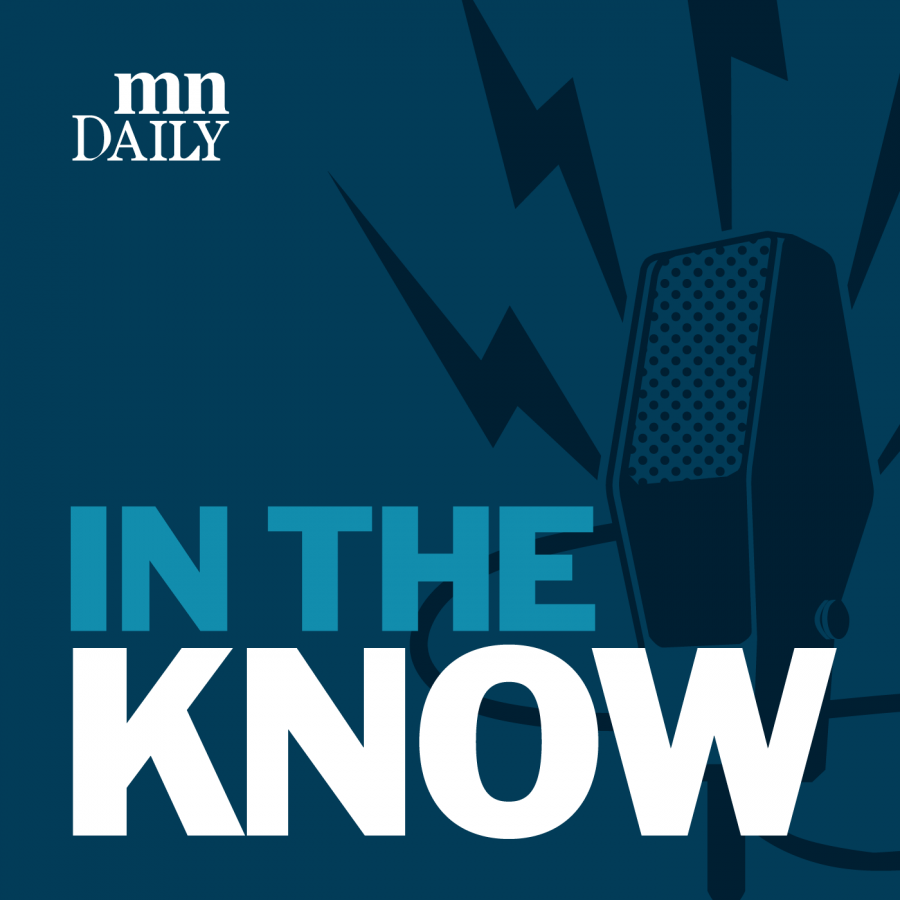INTRO MUSIC
ALBERTO GOMEZ: Hi, everyone. My name is Alberto Gomez and you’re listening to In The Know, a podcast by the Minnesota Daily. Together, we’ll be exploring the University of Minnesota’s students and communities with each episode.
On the evening of Friday June 3, a 15-year-old boy was shot in the leg near the 1700 block of University avenue, reports the Star Tribune. According to officers from the University of Minnesota Police Department, or UMPD, the shots originated from the Students’ Co-op, a community housing space on campus.
Ryan Sibley, a fourth year student at the U, was next door at his fraternity house Delta Tau Delta that night. According to Sibley, he was inside his house when a fight broke out in front of the Student Co-op.
RYAN SIBLEY: And then fighting. I started thinking it must’ve escalated because at some point we heard gunshots from behind the houses or, like, in the alleyway. I don’t know exactly where. But as soon as we heard that, we ran upside upstairs and kind of, like, took shelter.
GOMEZ: According to Sibley and Rocky Brown, another student from Delta Tau Delta, fights and violent occurrences like that of June 3 are not new.
ROCKY BROWN: I was like, ‘oh, of course. Of course this happened’… Every time Co-op throws a party, it’s just like something happens.
GOMEZ: According to UMPD, police have been called to the Co-op 46 times since January of 2022.
According to a statement posted on their website on June 7, The Student Co-op denies association with the June 3rd shooting. The Co-op writes “We learned last fall that the house’s cooperative governance collapsed during the beginning of the COVID-19 pandemic, and continued to deteriorate as member residents moved out of the Co-op. Soon, only squatters, and not Co-op members, remained at the property.”
According to the Student Co-op’s new board, the Co-op filed for an eviction of all occupants in May, with a court hearing scheduled for June 1. As of June 4, squatters and unwanted residents of the building have been evicted and removed from the property.
The Student Co-op did not respond to inquiry from the Daily.
Despite action from the Co-op and UMPD, students like Sibley and Brown have expressed an increased concern for safety in the University area. According to a 2019 study from the National Bureau of Economic Research, the coming of summer directly correlates to a rise in violent crime. The Bureau states that in Los Angeles the rate of violent crime increases by 5.7% as temperatures rise above 85 degrees Fahrenheit when ruling out behavioral and socio-economic factors, such as poverty and income.
On May 30, the Star Tribune released a report highlighting how crime rates have shifted in the Twin City area over the last five years. According to the Star Tribune, of the 52 metro area communities only Minneapolis, Robbinsdale, and Colombia show a strong increase in violent crime such as homicide, robbery, and aggravated assault. Minneapolis shows a rate change of 100 violent incidents per 10,000 residents in 2015-2017 to 120 incidents in 2019-2021.
Though, the data collected may possess some flaws due to the many of the police departments in the Twin City area switching to the National Incident-Based Reporting System and away from old tracking systems.
The Daily sat down with Michelle Phelps, an associate professor of sociology at the University of Minnesota, to better understand what could cause a violent crime uptick in the University area.
Phelps states that violent crime is largely a “young person’s game.” According to Phelps, in heated interactions between two or more parties, most young people behave violently as a form of self-defense.
MICHELLE PHELPS: When we think about shootings, that’s like among young people in a distressed community, that’s often about sort of a sense that your, your reputation has been insulted. And that in order to sort of create a sense of safety for yourself and the people associated with you, you have to be known as somebody who doesn’t get pushed over.
GOMEZ: Phelps states that though there may be patterns to behavior, that does not mean that every instance of violent crime, like the shooting on June 3, can easily be lumped as a one size fits all problem.
According to Phelps, describing a crime as “senseless” distances the crime from possible systemic or personal issues that can cause an individual to fall into patterns of violence.
PHELPS: We can think about like cycles of retaliatory gang violence, for instance, right? Where there’s a beef between two people, one person shoots and kills the other person, that person then attacks people associated with the first person and back and forth, and back and forth, that kind of thing, often, and then bystanders are killed in the process, right? That often gets described as senseless, and it’s not. It’s organized, not in the sense of there’s like a meta structure here. Somebody’s like saying, “Oh, this is exactly who’s going to be shot.” But there’s a logic to it.
GOMEZ: Phelps attributes Covid-19 as directly influencing the rising crime rate in Minneapolis. She explains that shutting down activities and outreach programs affects young people the most. According to Phelps, removing children from schools, for example, offers more opportunities for misbehavior.
Phelps attributes what is called “Strain Theory” to the rising crime rates.
PHELPS: And it basically says, the more strain people are under and particularly the bigger the gap between the sort of American Dream that they’re told that they can achieve and their actual everyday life and what they feel is actually within reach for them.
GOMEZ: These gaps can be exacerbated by economic disparities, inaccessibility to healthcare, and increased stress. Phelps explains that strain “induces people to engage in crime” as a possible means for economic rewards or even social validation.
According to Phelps, the strain that the Covid 19 pandemic has caused still remains understudied. The effects of the pandemic, according to Phelps, has begun raising questions of how isolation and learning barriers will affect crime in the years to come.
The Daily sat down with Myron Frans, the Senior Vice President for Finance and Operations at the University of Minnesota, to learn more about what the University of Minnesota plans to do in the face of rising crime rate and the oncoming summer.
According to Frans, UMPD has experienced issues retaining officers after seeing an increase to 61 officers in 2021.
MYRON FRANS: We’re down to 48 officers now.
GOMEZ: According to Frans, Dinkytown, for example, has lost some police beat coverage due to a smaller number of officers.
In response, the University had made a $100 million request to the Minnesota State Legislature. According to Frans, the request would have included $10 million for safety provisions such as officer training, upgrading security systems, and improved lighting around campus.
FRANS: To the legislature, we’re very disappointed we didn’t get it. We’re gonna try to put together yet another request because we think there are some real opportunities to decrease the pressure on the officer’s time to be worrying about building security when they can be worrying about public safety, you know, for people out and around.
GOMEZ: Frans recommends students avoid walking alone or utilize other safety resources, such as the Rave Guardian app or 624-WALK, an escort program for students fearful of walking alone.
FRANS: I think we do feel a responsibility to try to, to, to be, um, come up with some ways to deal with these issues, uh, that students are having.
GOMEZ: According to Frans, because the Legislature request did not include enough funding for safety provisions, the University has instead considered investing in property in the Dinkytown area in order to “improve the atmosphere.” According to Frans, this could mean extending the reach of safety ambassadors and improving lighting in the University area.
A 2020 study from the John Jay College of Criminology concluded that improved and increased lighting, the greenification of polluted spaces and fixing abandoned buildings deters violent crimes of opportunity, such as assaults and robberies. The study explains that the reduction of stress and strain on local communities eases tensions, thus fostering positive use of neighborhoods.
Skeptical at first, Phelps explains investment in public spaces helps create a community that residents would want to nurture.
PHELPS: We tend to think about crime is like a person goes out and is like, ‘I’m going to go do this crime.’ And instead, it’s much more about, do you have a person who’s in the right frame of mind?
GOMEZ: According to Phelps, utilizing empty spaces like parking lots and fields and updating abandoned buildings deters community members from turning to violent crime. A study from the University of Pennsylvania shows that “creating park-like settings” (planting trees and creating garden spaces) reduced safety concerns in Philadelphia by 58% and reduced gun violence by 17%. Another study from the University of Pennsylvania revealed that small tasks like cleaning up trash in polluted neighborhoods and mowing overgrown lots in Philadelphia correlated to a 9% reduction in local shootings.
In contrast to the rise of violent crime in the Minneapolis and University area, students questioned by the Daily showed little concern. Summer Abouhasira is a third year student at the University of Minnesota.
SUMMER ABOUHASIRA: I feel like, because there’s a lot of, I feel like there’s always an uptick of crime, like in the summer as like the weather gets nicer, and so seeing news of a shooting didn’t really surprise me.
GOMEZ: According to Abouhasira, crime is a natural part of living in the Dinkytown area and so close to Minneapolis. Abouhasira states that she doesn’t feel a high fear of her safety because she and her friends tend to travel in groups late at night and is more concerned about other dilemmas.
ABOUHASIRA: I think I’m more worried about, like, a man following me home rather than like getting shot because I feel like it’s just so out there.
GOMEZ: Nicola Alexander-Knight is the mother of a soon-to-be University of Minnesota student. Alexander-Knight heard about the June 3 shooting but felt confident in her daughter’s ability to utilize campus safety resources, such as night escorts and campus buses.
NICOLA ALEXANDER-KNIGHT: Somebody saw a coyote the other day. For some reason that got me more scared than hearing the other things around campus.
GOMEZ: Much like Abouhasira, Alexander-Knight states that living near the University comes with expected dangers that she hopes her daughter can avoid accordingly.
The Daily would like to thank all of our listeners for tuning in. We’ll see you next time. My name is Alberto Gomez and this is In The Know.



